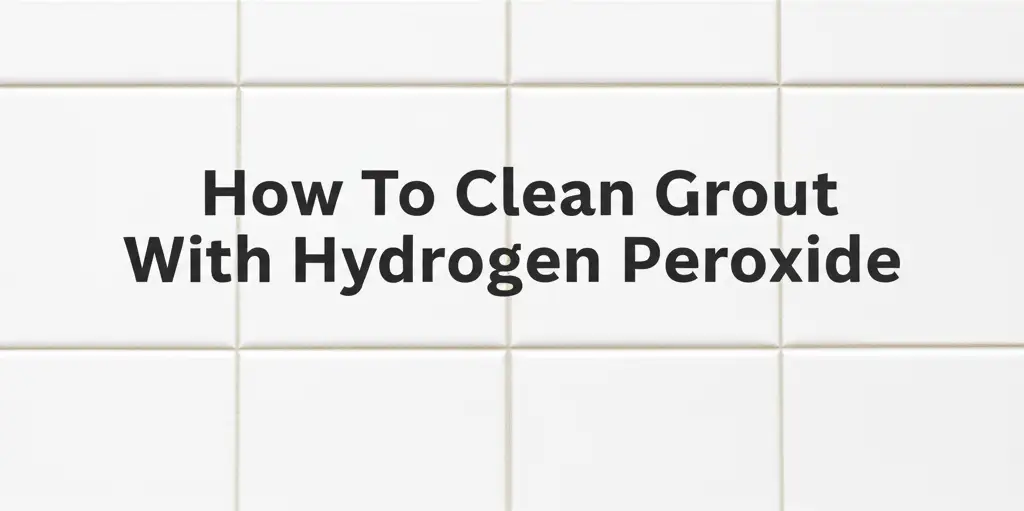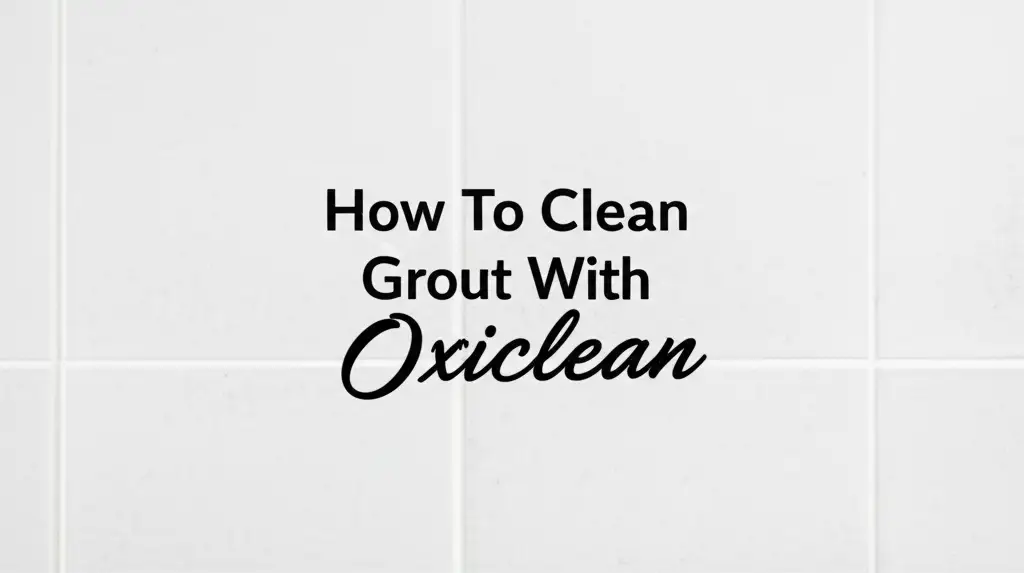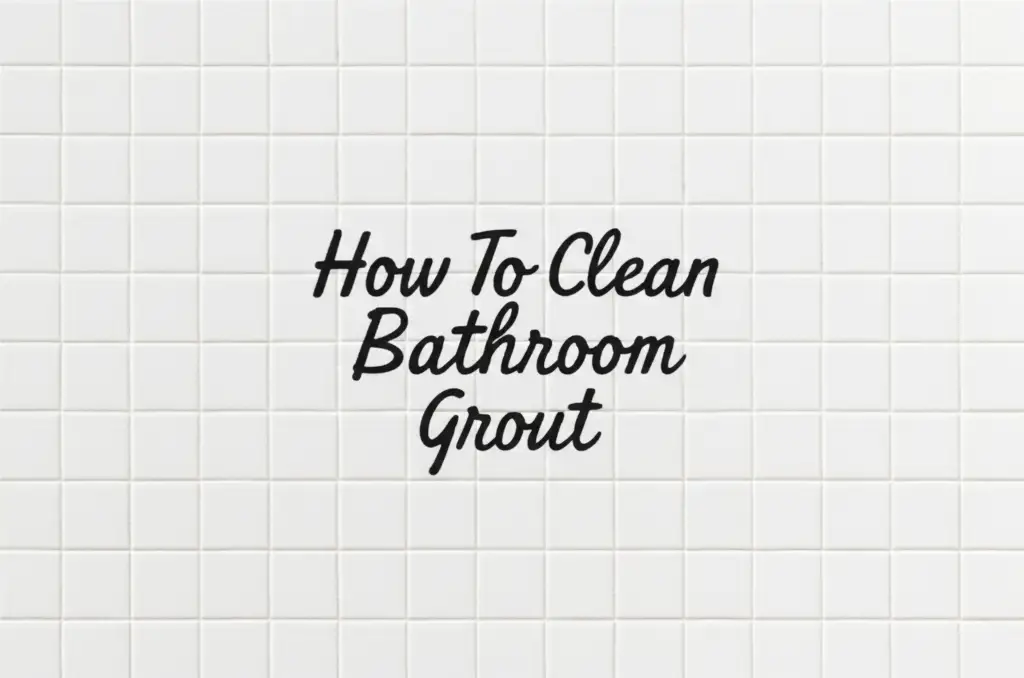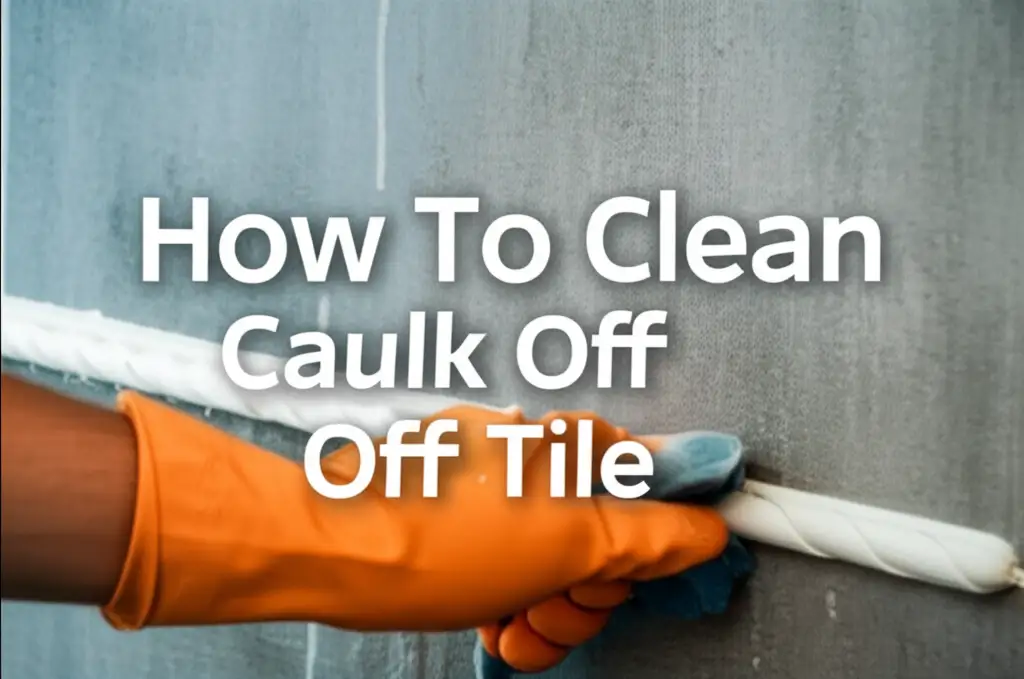· Home Cleaning · 11 min read
How To Clean Grout With Hydrogen Peroxide

Clean Grout with Hydrogen Peroxide: A Simple Guide
Is your grout looking less than pristine? Dirty, discolored grout can make even the cleanest spaces feel unkempt. It often traps dirt, grime, and even mold, diminishing the beauty of your tiles. You might think harsh chemicals are the only solution, but that is not always true.
Hydrogen peroxide offers a powerful, yet gentle, way to restore your grout’s sparkle. This common household item is a fantastic tool for tackling tough stains and killing mildew. It helps whiten surfaces without the strong fumes associated with bleach. In this article, I will guide you through the process of how to clean grout with hydrogen peroxide. We will cover why it works, what you need, and a step-by-step method to achieve amazing results.
Takeaway
- Hydrogen peroxide offers an effective, non-toxic solution for dirty grout.
- Always test hydrogen peroxide on an inconspicuous area first.
- Combine hydrogen peroxide with baking soda for extra cleaning power.
- Regular maintenance helps keep grout clean after treatment.
- Wear gloves and ensure good ventilation during cleaning.
To clean grout with hydrogen peroxide, first clear the area and pre-clean loose debris. Apply 3% hydrogen peroxide directly to the grout lines, letting it sit for 10-15 minutes. Scrub with a stiff brush, then rinse thoroughly with water, and dry the area completely for sparkling results.
Why Choose Hydrogen Peroxide for Grout Cleaning?
Many people wonder about the best way to tackle dirty grout. You might consider harsh bleaches or strong chemical cleaners. However, hydrogen peroxide presents a compelling alternative for several reasons. It offers a powerful cleaning action without the aggressive properties of some commercial products.
Hydrogen peroxide works as an oxidizing agent. This means it breaks down organic matter, including dirt, grime, and common stains found in grout lines. It effectively lifts these particles from the porous surface of the grout. This oxidative process also makes it excellent at brightening dull or discolored grout.
Beyond its cleaning power, hydrogen peroxide also has antiseptic properties. It effectively kills bacteria, mold, and mildew that often thrive in damp bathroom or kitchen grout. This helps to eliminate the source of discoloration and prevent future growth. Using hydrogen peroxide offers a safer choice for your home environment compared to products with strong fumes. It breaks down into water and oxygen, leaving no harmful residues behind. For more on tackling mold, you can also explore methods like how to clean black mold off wood.
Essential Preparations Before You Begin
Before you begin the exciting process of transforming your dirty grout, some essential preparation is necessary. Proper groundwork ensures safety, effectiveness, and prevents any potential damage. Taking these steps makes the cleaning process smoother and more efficient. I always find that a little planning saves a lot of hassle in the long run.
First, gather all your necessary supplies. You will need a bottle of 3% hydrogen peroxide (the common household variety). A stiff-bristled brush or an old toothbrush is crucial for scrubbing. You will also need a spray bottle for easier application, some clean rags or towels, and a bucket of plain water for rinsing. Wearing rubber gloves is a good idea to protect your hands.
Next, ensure the area is well-ventilated. Open windows or turn on exhaust fans, especially if you are working in a bathroom. This helps dissipate any mild fumes. Always test the hydrogen peroxide on an inconspicuous area of your grout first. Different grout types, especially unsealed or colored ones, might react differently. This small test ensures the peroxide does not cause discoloration or damage. For insights into cleaning different types of grout, consider reading about how to clean natural stone tile and grout. Finally, remove any loose debris, hair, or surface dirt from the grout lines. A quick vacuum or sweep can make a big difference before you apply any cleaning solution.
Step-by-Step Guide to Cleaning Grout with Hydrogen Peroxide
Cleaning your grout with hydrogen peroxide is a straightforward process. Following these steps ensures you achieve the best possible results. I found this method to be incredibly effective for brightening up dull grout lines. It works well on floors and walls, making your tiled areas look fresh again.
First, make sure the grout lines are free of loose dirt. You can vacuum the area or sweep it thoroughly. This prevents you from scrubbing dirt back into the grout. A clean surface helps the hydrogen peroxide work more effectively.
Next, pour 3% hydrogen peroxide into a spray bottle. Generously spray the solution directly onto the dirty grout lines. Ensure the grout is fully saturated. Let the hydrogen peroxide sit on the grout for about 10 to 15 minutes. This allows the peroxide to penetrate the porous surface and begin breaking down stains and grime.
After the waiting period, take your stiff-bristled brush or old toothbrush. Vigorously scrub the grout lines in small sections. You will notice the dirt and discoloration starting to lift away. For larger areas like kitchen or bathroom floors, this method is also highly effective, similar to general advice on [how to clean tile grout on floors](https://beacleaner.com/how to-clean-tile-grout-on-floors). Rinse the scrubbed area thoroughly with clean water using a damp rag or sponge. Be sure to remove all the peroxide residue. Finally, dry the area with a clean towel. This prevents water spots and helps reveal your sparkling clean grout.
Tackling Stubborn Stains and Deep Cleaning Grout
Sometimes, standard cleaning methods are not enough for deeply embedded dirt or persistent stains in your grout. When grout has turned black from years of accumulated grime and mildew, it requires a more intensive approach. Hydrogen peroxide remains a key player, but a little extra power can make a significant difference. I have found that combining it with other natural cleaners provides an excellent boost.
For very stubborn stains or black discoloration, create a powerful paste. Mix hydrogen peroxide with baking soda to form a thick, spreadable consistency. Baking soda is a mild abrasive and helps to scrub away tough grime. This combination creates a fizzing action, which helps lift deep-seated dirt. Apply this paste generously to the stained grout lines. Let the paste sit for 15-20 minutes, or even longer for extremely stubborn areas, like when you are trying to tackle grout that has turned completely black. For severe cases, this deep cleaning method is particularly useful, similar to techniques used to address how to clean grout that has turned black.
After the paste has had time to work, scrub the grout vigorously with a stiff brush. You might need to apply more pressure or use a smaller brush for tight spots. Rinse the area thoroughly with clean water. Repeat the process if necessary for heavily soiled areas. This method is also effective for addressing mold or mildew that has deeply penetrated the grout. For similar cleaning scenarios involving baking soda, consider learning about how to clean shower with baking soda. The combination of hydrogen peroxide and baking soda offers a potent, yet relatively safe, solution for deep cleaning your grout.
Maintaining Clean Grout and Preventing Future Stains
Cleaning grout is a rewarding task, but maintaining its cleanliness prevents frequent deep cleaning. Once you have put in the effort to restore your grout’s pristine look, you want it to last. Simple habits and routine care can make a huge difference. I have learned that consistent, small efforts are more effective than infrequent, intense cleaning sessions.
Regular cleaning is the first line of defense. Wipe down tiled surfaces, especially in bathrooms and kitchens, regularly. Use a mild all-purpose cleaner or a diluted solution of hydrogen peroxide for weekly touch-ups. This prevents dirt and soap scum from building up in the grout lines. Promptly addressing spills or grime before they set in saves a lot of trouble later.
Sealing your grout is another critical step in prevention. Grout is porous, meaning it can absorb liquids and stains easily. A good quality grout sealer creates a protective barrier, making it much harder for dirt, grease, and moisture to penetrate. Apply a sealer after deep cleaning, following the manufacturer’s instructions, and reapply it every 1-2 years, depending on traffic and product recommendations. This acts like an invisible shield for your grout.
Finally, ensuring proper ventilation in high-moisture areas, like bathrooms, is vital. Mold and mildew thrive in damp environments. Use exhaust fans during and after showers, or open windows to reduce humidity. This simple habit helps keep your grout dry and discourages mildew growth. Addressing excess moisture helps your grout stay cleaner for longer.
Safety Precautions and Tips for Using Hydrogen Peroxide
While hydrogen peroxide is a common household product, using it safely is always important. Following a few simple precautions ensures your cleaning experience is effective and without incident. I always prioritize safety when using any cleaning agent, even seemingly mild ones. Being mindful of these tips protects you and your surfaces.
First and foremost, wear protective gloves when handling hydrogen peroxide. While 3% hydrogen peroxide is relatively weak, prolonged skin contact can cause mild irritation or temporary whitening of the skin. Avoid direct contact with your eyes. If hydrogen peroxide splashes into your eyes, rinse them immediately and thoroughly with water for several minutes. Seek medical attention if irritation persists.
Ensure the area you are cleaning is well-ventilated. Open windows and doors, or use an exhaust fan, especially in enclosed spaces like bathrooms. Although hydrogen peroxide produces no harsh fumes, good airflow is always recommended during cleaning tasks. Never mix hydrogen peroxide with other cleaning chemicals, especially bleach. Combining these can create dangerous fumes or reactions. Stick to using hydrogen peroxide on its own or with natural agents like baking soda.
Store hydrogen peroxide in its original opaque bottle in a cool, dark place. Light degrades hydrogen peroxide, making it less effective over time. Always keep it out of reach of children and pets. These precautions ensure the product remains potent and is used responsibly. Following these safety measures helps you clean effectively and confidently.
FAQ Section
Is hydrogen peroxide safe for all grout types?
Hydrogen peroxide is generally safe for most traditional cement-based grout. However, always perform a patch test on an inconspicuous area first. Some colored grout might lighten slightly with repeated use. It is usually safe for sealed grout.
How often can I clean grout with hydrogen peroxide?
You can use hydrogen peroxide for deep cleaning grout as needed, typically every few months or when significant discoloration appears. For lighter cleaning or maintenance, a diluted solution can be used weekly. Frequent deep scrubbing is not necessary if you maintain it regularly.
Can hydrogen peroxide remove mold from grout?
Yes, hydrogen peroxide is effective at killing and removing mold and mildew from grout. Its oxidizing properties break down the mold’s cellular structure. For tough mold, allow the peroxide to sit for an extended period or use it as a paste with baking soda.
What strength of hydrogen peroxide should I use for grout?
The standard 3% hydrogen peroxide solution, commonly found in drugstores, is ideal for cleaning grout. Stronger concentrations are generally not necessary for household use and can be more hazardous. The 3% solution offers effective cleaning without undue risk.
Can I mix hydrogen peroxide with other cleaners for grout?
Do not mix hydrogen peroxide with bleach, as this can create dangerous gases. Mixing it with natural cleaners like baking soda is safe and often enhances its cleaning power. Always avoid combining cleaning agents unless specified by a reliable source.
Conclusion
Dirty grout can truly detract from the appearance of your tiled surfaces, making your home feel less clean than it is. Fortunately, you now have a powerful, yet gentle, solution at your fingertips. Learning how to clean grout with hydrogen peroxide offers an effective and often safer alternative to harsh chemical cleaners. This simple household staple works wonders at brightening discolored grout and tackling stubborn mold and mildew.
We have explored why hydrogen peroxide is an excellent choice, the essential preparations needed, and a clear step-by-step guide for its application. We also covered advanced techniques for deep cleaning and removing stubborn stains, even when grout has turned black. Remember the importance of safety precautions and good ventilation when using any cleaning product. Implementing a regular maintenance routine and sealing your grout will help keep your tiles looking fresh for longer. Embrace the power of hydrogen peroxide for sparkling, hygienic grout lines. Your tiles will thank you for it! Start your grout transformation today and enjoy a cleaner, brighter home.
- grout cleaning
- hydrogen peroxide uses
- tile cleaning
- mold removal
- deep clean grout




